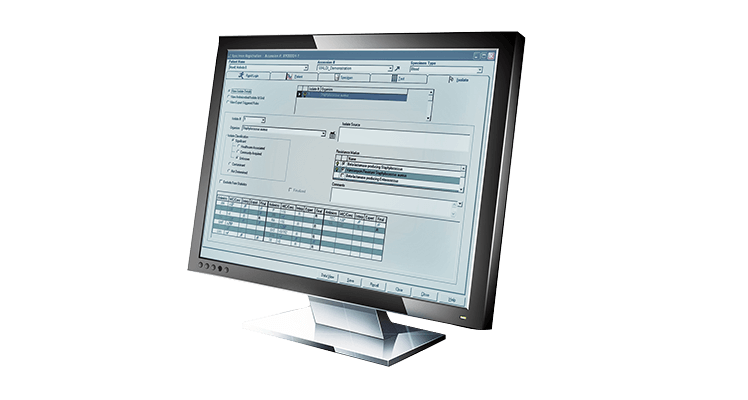The BD EpiCenter™ Microbiology Data Management System provides advanced data management for BD microbiology systems, including the BD BACTEC™ FX Blood Culture System, BD BACTEC™ MGIT™ Automated Mycobacterial Detection System, BD Phoenix™ Automated Identification and Antimicrobial Susceptibility Testing System and BD™ Bruker MALDI Biotyper® CA System. It integrates multiple platforms, helps facilitate improved workflows, analyzes data, and generates reports, including those used for epidemiological tracking.


- Overview
- EIFU & Resources

Fully traceable, streamlined workflow
Monitoring, analyzing and communicating microbiology data in a timely manner can directly impact patient care. However, obtaining, organizing and communicating this information is labor intensive.1,2
The combination of BD informatics with the BD instruments empowers
you to:2-4
- Identify bottlenecks and sources of errors across many diagnostic pathways, including bloodstream infections
- Increase confidence in your blood culture results
- Automate specimen traceability and data analytics across your network of labs and collection sites
- Impact key metrics such as turnaround time
- Receive custom alerts for critical results (e.g., CPO, VRSA, ESBL) to help support infection prevention and antimicrobial stewardship initiatives

Bloodstream Infection Solution

BD Clinical and Lab Support
Our collection of literature on industries and on our offerings gives you information you can use to continue striving for excellence.
Training resources to help improve your clinical practices as part of our goal of advancing the world of health.
We support the healthcare industry with market-leading products and services that aim to improve care while lowering costs. We host and take part in events that excel in advancing the world of health™.
We promote clinical excellence by providing various resources on best practices, clinical innovations and industry trends in healthcare.
- CDC. Preventing Adult Blood Culture Contamination: A Quality Tool for Clinical Laboratory Professionals. Available at: https://www.cdc.gov/labquality/docs/BCC-Prevention_A-Quality-Tool_CDC.pdf. Accessed October 2023.
- Khare R et al. Clin Infect Dis. 2020;70(2):262–8.
- BD EpiCenter™ Microbiology Data Management System User's Training Manual (SHQ-TM-020).
- Bruins MJ et al. Eur J Clin Microbiol Infect Dis. 2017;36(4):619–23.
- BD Phoenix™ M50 Automated Microbiology System User's Manual (500008930).
- Carey RB et al. Failure of Automated Systems to Detect Vancomycin-Resistant Staphylococcus aureus. Abstract presented at the Interscience Conference on Antimicrobial Agents and Chemotherapy (ICAAC), Washington, DC, 2004.
- Tenover FC et al. Emerg Infect Dis. 2006;12(8):1209–13.
- Kulah C et al. BMC Infect Dis. 2009;9:30.
- Mittman SA et al. J Clin Microbiol. 2009;47(11):3557–61.
- Woodford N et al. J Clin Microbiol. 2010;48(8):2999–3002.
- BD™ Bruker MALDI Biotyper CA System User Manual (8603291).
- Saffert RT et al. J Clin Microbiol. 2011;49(3):887–92.
- Knabl L et al. Lett Appl Microbiol. 2021;73(1):2–8.
- Watanabe N et al. J Infect Chemother. 2022;28(4):563–8.
- BD Synapsys™ Microbiology Informatics Solution User's Manual (L011216).